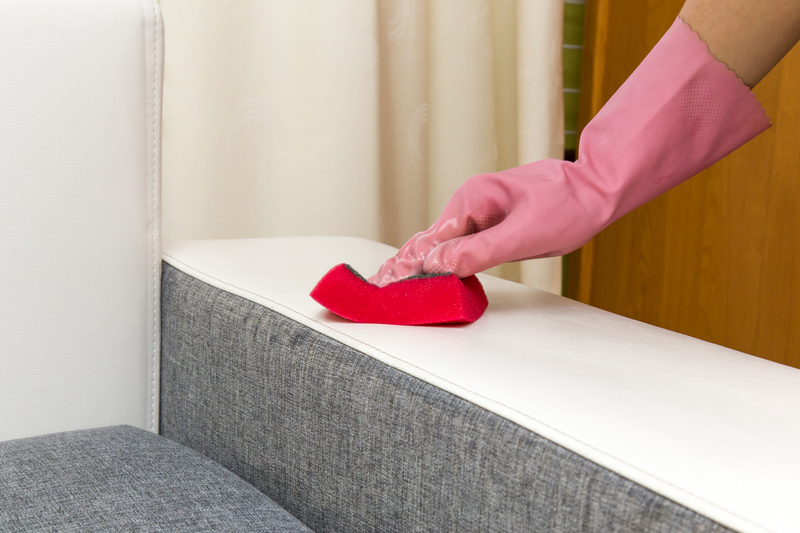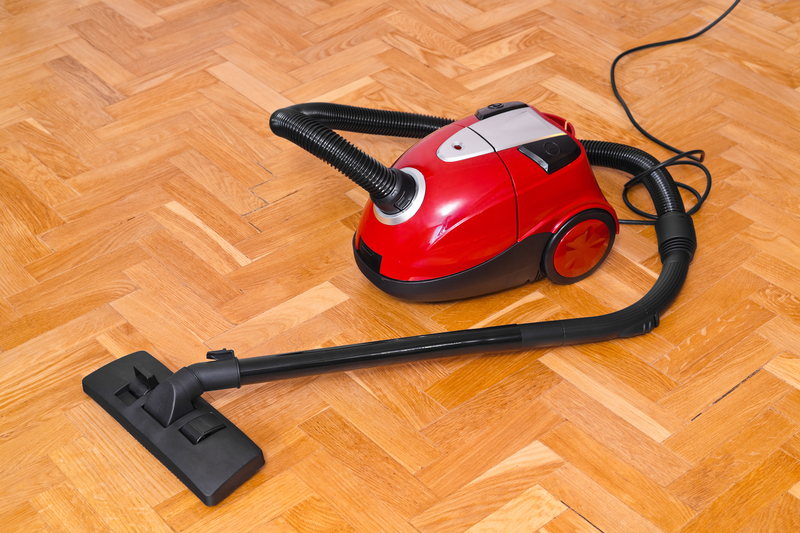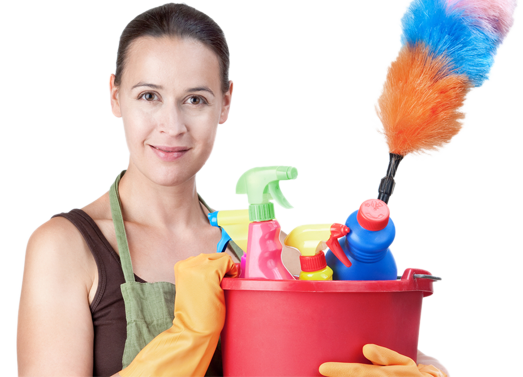Key Practices for a Mold-Free Bathroom Experience
Posted on 22/09/2025
Key Practices for a Mold-Free Bathroom Experience
If there's one place in the home prone to mold growth, it's the bathroom. Due to constant moisture, warmth, and limited ventilation, bathrooms offer ideal breeding grounds for mold and mildew. Not only unsightly and unpleasant, mold can cause harmful health issues and compromise your indoor air quality. Fortunately, with the right measures and habits, maintaining a mold-free bathroom is achievable for every homeowner.
Why Mold Grows in Bathrooms
Before diving into prevention, it's important to understand why bathrooms are at such high risk for mold buildup. Common contributing factors include:
- Consistent humidity from showers and baths
- Poor air circulation due to small windows or lack of exhaust fans
- Porous surfaces (grout, drywall, wood) that absorb moisture
- Plumbing leaks or standing water in tubs, showers, and sinks
Mold spores are always present in the air, but they need moisture and organic material (like soap residue, dust, or dead skin cells) to flourish. Keeping these factors in check with proven strategies is the secret to enjoying a mold-free bathroom environment.

Key Practices for Preventing Mold Growth in Bathrooms
Implementing a regular mold prevention routine is essential for long-term bathroom hygiene. Here's how you can keep your bathroom fresh, clean, and mold-free:
1. Maximize Ventilation and Airflow
- Use an exhaust fan: Always switch on your exhaust fan during and after showers or baths, and let it run for at least 20 minutes afterward to clear out moisture.
- Open windows: If possible, crack open a window to let out humid air and allow fresh air to circulate.
- Leave doors open: Keep the bathroom door ajar post-shower to enhance air movement, expediting the drying process of walls and floors.
2. Control Moisture Levels
- Use a dehumidifier: Portably dehumidifiers are excellent for bathrooms lacking proper ventilation.
- Wipe down surfaces: After using the shower or tub, quickly dry tiles, glass, and other wet surfaces with a squeegee or towel.
- Fix leaks promptly: Dripping faucets, leaking pipes, or pooling water beneath sinks can create perfect mold habitats. Repair all plumbing issues straight away.
3. Choose Mold-Resistant Materials and Products
- Install mold-resistant paint: Opt for anti-mildew or mold-resistant coatings on walls and ceilings.
- Select non-porous surfaces: Materials like ceramic, glass, and acrylic are less likely to trap moisture compared to wood, fabric, or regular drywall.
- Use mildew-proof shower curtains and liners: These specialized products inhibit fungal growth and are easy to clean.
4. Clean Regularly and Thoroughly
Regular cleaning is your number one defense for a mold-free washroom. The following steps should become weekly habits:
- Scrub tile and grout with a bathroom cleaner or a mixture of vinegar and baking soda to eliminate soap scum and prevent mold colonization.
- Launder towels, bathmats, and shower curtains frequently, making sure they are fully dry before reuse.
- Disinfect high-moisture spots--corners, around faucets, and behind the toilet--using a diluted bleach solution or commercial mold remover.
- Declutter shower shelves and remove unused bottles that could collect water and contribute to mildew growth.
5. Seal and Maintain Grout Lines
- Apply grout sealer: Waterproof your shower and tub areas by applying a grout sealer once a year. This prevents water and mold from penetrating cracks.
- Repair broken grout or caulk: Replace damaged or cracked grout/caulk to avoid moisture seepage behind tiles, which is a common spot for hidden mold.
Early Signs of Bathroom Mold: What to Watch For
Detecting early symptoms of mold can help you address the issue long before it spreads. Be on the lookout for:
- Musty odors: Even before visual signs appear, a persistent earthy smell in your bathroom is a giveaway.
- Discoloration: Black, green, or brown patches on grout, ceilings, or walls are red flags.
- Peeling paint/wallpaper: Bubbling or cracking surfaces may indicate underlying moisture and mold.
- Increased allergy symptoms: Sneezing, coughing, or watery eyes may be triggered in sensitive individuals when mold levels rise.
If you spot any of these warnings, act quickly with targeted cleaning and, if necessary, professional remediation.
Effective Cleaning Solutions for a Mold-Free Bathroom
Not all cleaning products are created equal. For a bathroom free from mold and mildew, use:
- White vinegar: This natural solution kills about 80% of mold species. Spray undiluted onto affected areas and let sit for at least one hour before rinsing.
- Baking soda: Mixed with water, it creates a gentle abrasive cleaner for scrubbing tiles, grout, and bathtubs.
- Hydrogen peroxide: Spray a 3% solution onto moldy spots, wait 10 minutes, then wipe clean.
- Bleach: Use sparingly and only on non-porous surfaces. Mix one cup of bleach with a gallon of water to disinfect showers, sinks, and tiles.
- Commercial mold removers: Always follow the manufacturer's instructions, and ensure proper ventilation when using chemical products.
Important Cleaning Tips
- Never mix vinegar and bleach as it creates toxic fumes.
- Test cleaners on an inconspicuous area before widespread application.
- Wear rubber gloves and ventilation masks when dealing with mold, especially large patches.
Long-Term Strategies for a Mold-Free Bathroom Environment
Beyond daily and weekly cleaning, adopt these practices to ensure a healthy, mold-resistant bathroom for years to come:
- Upgrade ventilation systems: Consider installing higher-capacity fans or investing in humidity-sensing models that automatically turn on when moisture levels rise.
- Monitor humidity: Use a hygrometer and aim to keep indoor levels below 50% at all times.
- Limit moisture sources: Keep bathroom doors and windows closed when using the shower (with the fan on), and mop up water from floors immediately.
- Declutter surfaces: Store only essentials in the shower or around sinks to minimize moisture buildup on bottles, sponges, and shelves.
- Professional inspections: If you have recurring mold issues, consult a specialist. Hidden leaks or inadequate insulation may require expert intervention.
Top Mold-Resistant Upgrades
When renovating your bathroom or performing upgrades, consider these mold-prevention modifications:
- Mold-resistant drywall (green board): Specially designed for high-humidity spaces, it resists moisture and fungal growth better than standard drywall.
- Waterproof wall panels: Acrylic or fiberglass wall surrounds offer seamless, easy-to-clean surfaces with no grout lines.
- Touchless faucets and soap dispensers: Reduce soap scum residue and bacterial accumulation.
- Properly sloped floors and drains: Ensure water flows efficiently toward the drain and doesn't accumulate around the edges.

Frequently Asked Questions About Mold-Free Bathroom Living
Can cleaning alone keep a bathroom free of mold?
While regular cleaning is crucial, it must be paired with proper ventilation and moisture control. Ignoring leaks, allowing excessive humidity, or using porous materials can defeat even the best cleaning routines.
Are natural cleaning solutions as effective as chemicals for mold?
Natural options like vinegar and baking soda work for minor or surface mold but may not eradicate severe or deep-seated infestations. Severe cases require commercial products or professional removal.
How often should I clean to prevent bathroom mold?
Aim for a thorough cleaning at least once a week, with daily habits such as wiping down shower walls and squeegeeing glass to minimize water retention.
Should I replace tiles or fixtures after a mold infestation?
If mold has deeply penetrated grout, caulk, or porous materials that cannot be cleaned, replacement may be the only answer for a truly mold-free environment.
Conclusion: Enjoying a Mold-Free Bathroom Year-Round
Achieving a mold-free bathroom experience is well within your reach. By maximizing ventilation, precisely controlling moisture, cleaning diligently, and choosing the right materials, you can easily maintain a healthy, inviting space. Adopting these key mold prevention practices not only protects your home's value but also safeguards your health and well-being.
Commit today to these proven habits, and enjoy the peace of mind that comes with a spotless, mold-free bathroom all year long!




